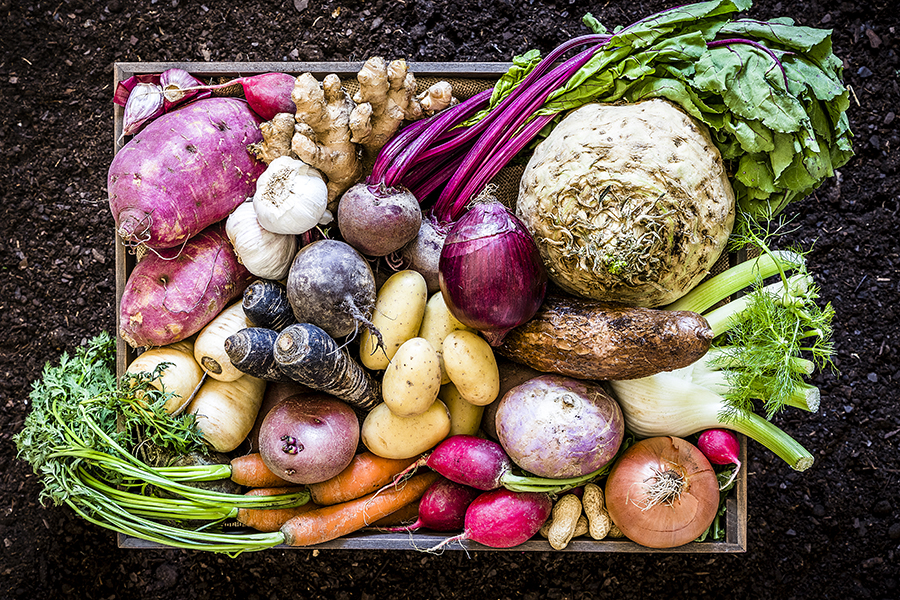Home > Lifestyle > What Are Heirloom Crops?
What Are Heirloom Crops?

You’ve probably heard about the importance of heirloom crops, but what does that mean? If you have a hard time understanding precisely what “heirloom” means when it comes to gardening and food production, you’re in the right place. Let’s dig into the purpose of these valuable plants and why they’re worth having in your garden.
See more: Heirloom Seed Preservation and Heritage Horticulture
What are Heirloom Crops?
To qualify as an heirloom fruit or vegetable, the crop’s seeds need to have been around for more than 50 years, although some garden experts will only give the title to those with a pre-WWII timeline. Heirloom crops often possess unique characteristics, such as color and shape, which leads farmers and gardeners to save the seeds and pass them down from generation to generation to preserve their distinctive traits.
If you’ve ever wandered through an antique shop admiring the collections of dishes, furniture and artwork, you already have a good understanding of why heirlooms are important. Humans are naturally drawn to stories and history – we can’t help it. The same thing applies to heirloom plants.
From Mortgage Lifter tomatoes that were cultivated and sold by a man who, quite literally, wanted to pay off his mortgage to Black Watchman hollyhock with its lineage that goes all the way back to Thomas Jefferson’s Monticello garden, heirloom plants have a rich and storied past.
See more: 12 Specialty Seed Varieties You May Not Be Familiar With

What Makes Heirloom Crops Different?
A large part of the value of heirloom crops comes from the stories that accompany them. How many people do you know, for example, that can say they have a descendent of Thomas Jefferson’s flowers growing in their garden?
Thanks to their longevity and persistence in surviving for decades, heirloom crops are “built to last,” so to speak. Many tomatoes, for instance, were preserved and passed along because they were extremely delicious, hardy and crack-resistant.
To qualify as an heirloom crop, the fruit or vegetable must also have been open-pollinated. That means it was pollinated by natural sources, such as birds, wind or insects. One of the benefits of this trait is that you aren’t going to be surprised when your plants begin to flower and produce fruit. Heirloom plants stay true to their type. Hybrids wouldn’t fall under this same category.
It’s also worth noting that while all heirlooms are self-pollinated, not all self-pollinated plants are heirlooms. Heirlooms are also non-GMO, which means humans have not altered their DNA.
See more: What Is Yellow Watermelon?

Where to Buy Heirloom Seeds
There are a multitude of seed companies offering heirloom seeds for your garden. Some of the most popular include Baker Creek Heirloom Seeds, Seed Savers Exchange, Johnny’s Selected Seeds, Territorial Seeds and Annie’s Heirloom Seeds. But you may get lucky while perusing your local grocery or garden supply store and find packets of heirloom seeds there, too.
See more: Complete Guide to Tomato Varieties and How to Use Them
Examples of Heirloom Seeds
Dragon Tongue Bean: An increasingly popular Dutch heirloom, these 7-inch pods are a sight to behold with deep purple streaks and beautiful beans.
Lettuce Merveille Des Quatre Saisons: This French heirloom can be traced back to 1885. Unlike many common grocery varieties, the leaves are crisp and tender with red and purple coloration.
Cosmic Purple Carrot: In addition to being gorgeous to look at, the flowers are sweet and spicy, making them a favorite among home gardeners.
Costoluto Genovese Tomato: With a fluted shape and deep, flavorful taste, this Italian favorite has been winning over gardeners and chefs alike since the early 19th century.
Boston Marrow Squash: This richly saturated orange squash traces its history all the way back to 1831 in the Northeast. It was a valuable commercial variety for more than 150 years.




[…] to keep cultivating them, because they have not become obsolete. Whenever possible, purchasing heirloom varieties also support farms making the effort to preserve and cultivate non-hybrid crops, maintain seed […]
[…] plant nursery specializing in native Florida plants, including aquatic pollinators, wildflowers and heirloom crops. They also assist with habitat restoration and landscape designing regardless of space or size […]
[…] carrots have been cultivated for thousands of years and are said to be an heirloom crop. Because they are high in pro-vitamin A carotenes, a nutrient required for good vision, they are […]
[…] which can harm soil and wildlife, as well as harm human health. Aside from organic gardening, heirloom crops can also be grown organically. The term heirloom refers to plants that were developed before […]
[…] varieties, as they will not produce true-to-type plants. You should look for open-pollinated or heirloom varieties, which will produce plants that are similar to the parent […]